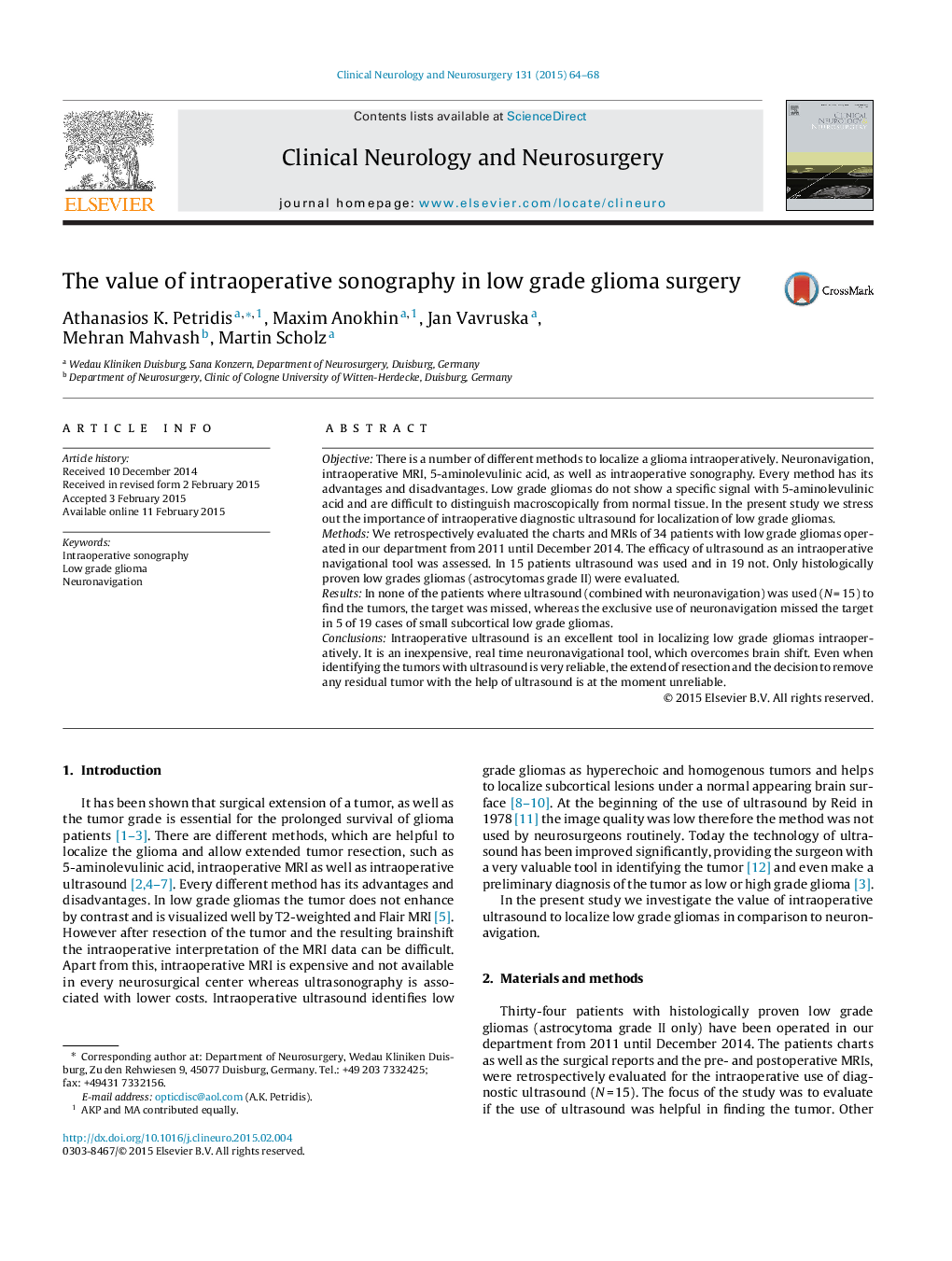| Article ID | Journal | Published Year | Pages | File Type |
|---|---|---|---|---|
| 3039952 | Clinical Neurology and Neurosurgery | 2015 | 5 Pages |
•Intraoperative ultrasound is of great value to identify small subcortical low grade gliomas.•Intraoperative ultrasound is a real time imaging procedure.•Intraoperative ultrasound does not help defining the resection extend of low grade glioma.
ObjectiveThere is a number of different methods to localize a glioma intraoperatively. Neuronavigation, intraoperative MRI, 5-aminolevulinic acid, as well as intraoperative sonography. Every method has its advantages and disadvantages. Low grade gliomas do not show a specific signal with 5-aminolevulinic acid and are difficult to distinguish macroscopically from normal tissue. In the present study we stress out the importance of intraoperative diagnostic ultrasound for localization of low grade gliomas.MethodsWe retrospectively evaluated the charts and MRIs of 34 patients with low grade gliomas operated in our department from 2011 until December 2014. The efficacy of ultrasound as an intraoperative navigational tool was assessed. In 15 patients ultrasound was used and in 19 not. Only histologically proven low grades gliomas (astrocytomas grade II) were evaluated.ResultsIn none of the patients where ultrasound (combined with neuronavigation) was used (N = 15) to find the tumors, the target was missed, whereas the exclusive use of neuronavigation missed the target in 5 of 19 cases of small subcortical low grade gliomas.ConclusionsIntraoperative ultrasound is an excellent tool in localizing low grade gliomas intraoperatively. It is an inexpensive, real time neuronavigational tool, which overcomes brain shift. Even when identifying the tumors with ultrasound is very reliable, the extend of resection and the decision to remove any residual tumor with the help of ultrasound is at the moment unreliable.
